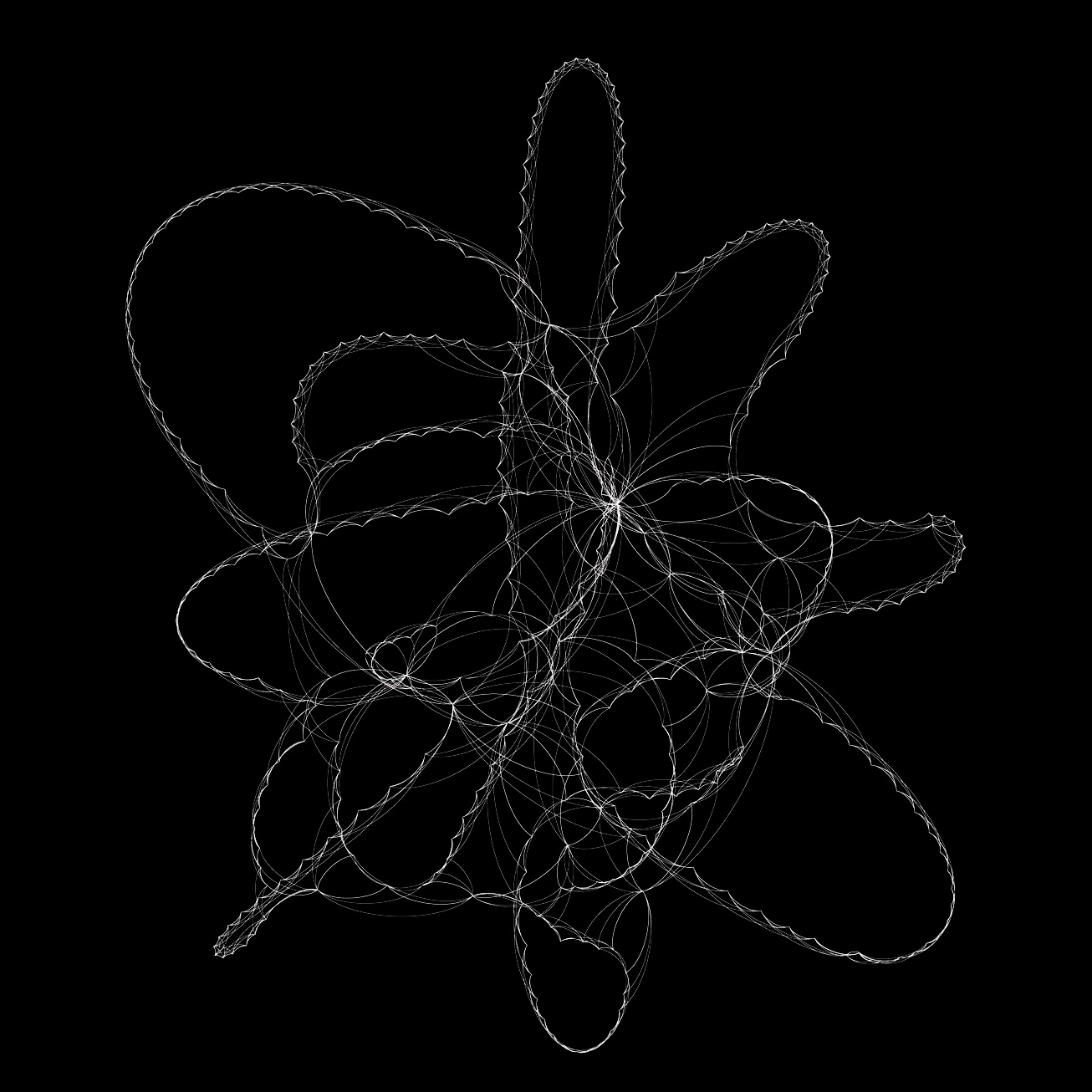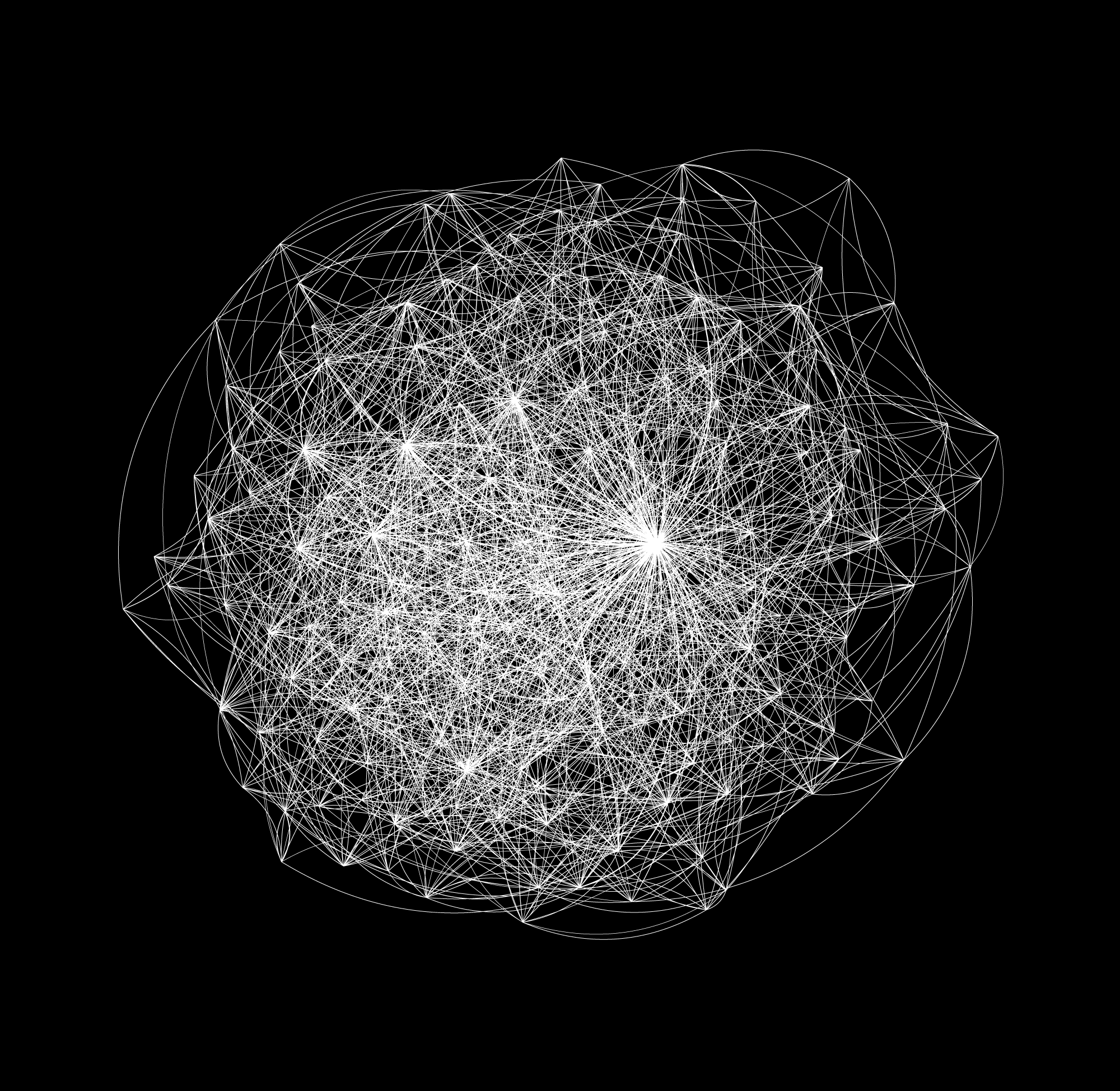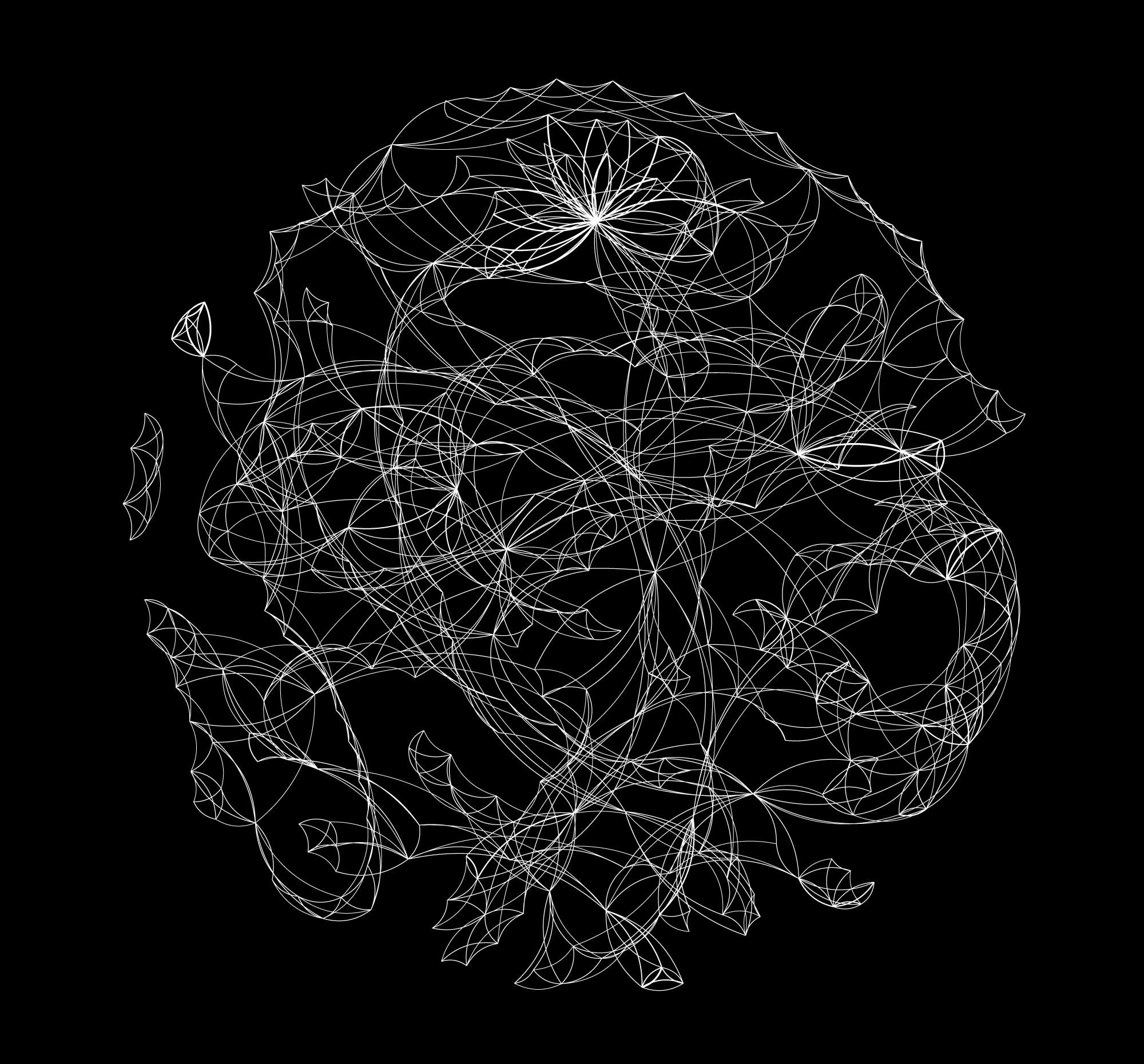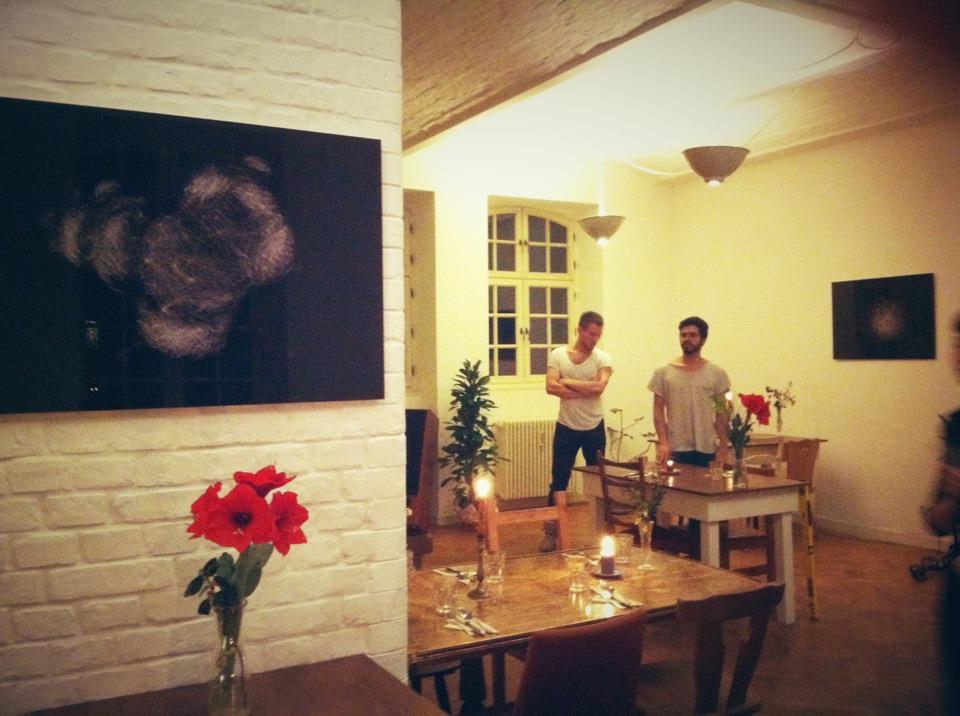Any text can be represented as a network where words are the nodes and their co-occurrences are the connections between them. The resulting structure conflates time, making the text happen at once, revealing the pathways and traces it makes to inscribe itself into the real. The structure of the text merges with the content to communicate the distances and the gaps in-between.
The images presented below are the translations of texts into network graphs made using the methodology and the tool that I developed as part of my research in polysingularity of text and meaning.
They were presented as large format gallery prints as well as in a book “Polysingularity of Textual Matter”.
…
How it Works?
These visualizations use the text-to-network translation algorithm that I developed and implemented in
InfraNodus.Com — an online tool for generating insight using text network analysis.
The main principle of the algorithm is based on detecting which words tend to co-occur together in the same context and aligning them closer to each other on the graph. The most influential words are then dissuaded apart from each other and the less influential ones are grouped around them.
Thanks to this approach you can see the structure of the narrative. You will notice that poetical texts tend to be dispersed as if inviting the reader to participate in filling the gaps between the different ideas and images that are evoked. While a more informative article (which was about the same length) is densely interconnected and more homogeneous, focusing on a couple of main topics.
These images demonstrate that there is a correlation between the type of text and its network structure. Something that is focused on a particular concept or agenda will look and feel more coherent and interconnected. While something more open and poetic will be carried by a structure that is more dispersed and less focused on only one center.
Of course, this also depends on the type of poetry and the intended effect.
For example, if we take Quran, which is poetic, we will see that its structure is quite centralized, focused on Allah, and all the other concepts are employed to support the main narrative. The Bible, on the other hand, tends to have a more diversified narrative structure.





